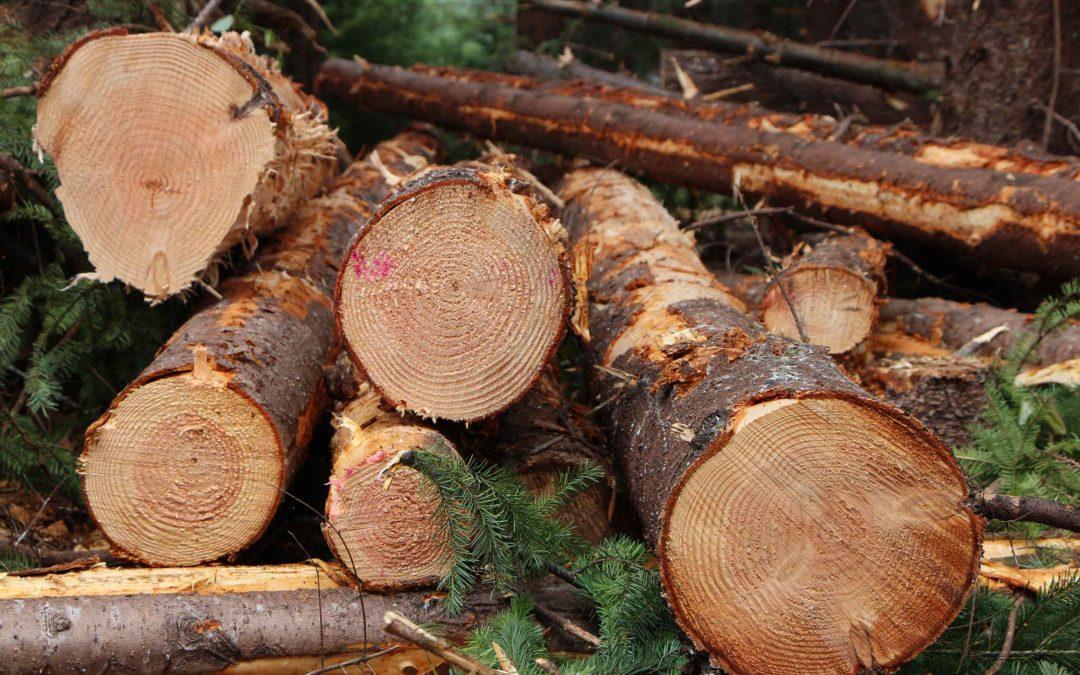Hurricane Laura Packs Louisiana Punch
Loggers and landowners in Louisiana experienced a year’s worth of timber harvests overnight as more than 758,000 acres of timberland were badly damaged by Hurricane Laura in late August. That includes more than 3.5 billion BF of sawtimber (2.8 billion BF pine and 740 billion BF of hardwood) alone. According to a report by Jeff Zeringue in the Louisiana Logging Council’s Louisiana Logger publication, more than 39 million tons of wood came crashing down as the storm blew through.
The storm came ashore near Cameron, La., on August 27 as a Category 4 hurricane, packing 160 MPH winds and maintained hurricane status (80+ MPH winds) all the way to the Arkansas state line. The last time the region experienced a weather event with wind speeds this strong was when the Last Island Hurricane struck in 1856. Before Laura, that storm was the strongest hurricane to make landfall in Louisiana history, and fifth-strongest continental U.S. landfall hurricane on record.
Afterward, 20 parishes reported heavy timber damage. In an economic impact report on the storm that cited reports from the LSU AgCenter, industry analysts Forest2Market noted the storm’s $1.1 billion impact on timber inventories was almost twice as much as 2005 hurricanes Rita and Katrina combined.
“Based on the amount of infrastructure damage that occurred and the losses associated with timber, the total economic impact to the food and fiber sector from Hurricane Laura will be as large as or larger than any storm that I have developed estimates for since my time with the AgCenter,” said LSU AgCenter economist Kurt Guidry.
On the ground, loggers are looking to salvage what they can, but over-saturated timber markets and log purchasers mean a big drop in timber prices. Plus, the slow and dangerous pace of salvaging wind-blown timber makes safety the top consideration. Standard piney woods mechanized logging equipment is not designed to handle horizontal stems.
Robbie Hutchins, extension forester for the LSU AgCenter Extension Service, says it’s not just a matter of bringing in chain saw crews. The unsafe nature of the work means insurance costs will balloon. The way the timber is twisted after such a storm, “It becomes a safety nightmare,” Hutchins says. A report from the AgCenter also determined that only 10% of the downed pine trees can be salvaged and that none of the damaged hardwood trees are salvageable.
Some of the worst damage is in recently thinned stands, where remaining trees have less canopy to buffer each other during high winds. Logs that can be salvaged are also degraded by wind damage from twisting and stress. The same dynamics came into play two years ago after Hurricane Michael hit northwest Florida and southwest Georgia: Huge amounts of timber in barely salvageable condition, with overall market conditions making it barely worthwhile to cut and haul any of it. Noting that the parishes hit hardest contain the most productive timberlands in Louisiana, Louisiana Forestry Assn. and Louisiana Logging Council Executive Director Buck Vandersteen says “Unfortunately, most of this will be unsalvageable. Making matters worse is most mills are already carrying a full wood inventory.”
According to the Forest2Market report, Hurricane Laura will include a near-term impact driving stumpage prices down as too much wood, much of it low grade, chases too few market outlets. The report states that longer-term “Stumpage prices will become more volatile and likely trend higher thereafter—once the market works through the usable salvaged timber—and the regional supply chain adapts to new operating conditions that reflect the loss of over $1 billion in timber resources.”
Seeking Relief
Vandersteen reported in his Louisiana Logger column that loggers should look into the federal Small Business Administration disaster loan program that offers low-interest loans up to $2 million for businesses impacted by the hurricane. The Louisiana Treasurer’s Office also administers a small business grant program for businesses affected by the coronavirus that could also be helpful, he added. Additional relief programs include USDA Farm Service Agency (FSA) in Louisiana accepting applications in eligible parishes for the Emergency Conservation Program (ECP) and Emergency Forest Restoration Program (EFRP).
The ECP helps to restore damaged farmland to pre-disaster conditions and may provide up to 75-90% of cost-sharing. The EFRP provides payments to eligible owners of nonindustrial private forest (NIPF) land to carry out emergency measures to restore land damaged by a natural disaster. Local FSA County Committees determine land eligibility using information provided and if applicable, an on-site damage inspection to assess the type and extent of damage. Eligible forest restoration practices include debris removal, such as down or damaged trees, in order to establish a new stand or provide natural regeneration; site preparation, planting materials and labor to replant forest land; restoration of forestland roads, fire lanes, fuel breaks or erosion control structures; fencing, tree shelters and tree tubes to protect trees from wildlife damage; and wildlife enhancement to provide cover openings and wildlife habitat.
Latest News

Lucky Branch Tract Finds Some Luck
The Lucky Branch tract, an 80-acre parcel of bottomland hardwood forest situated next to the Little River and Uwharrie National Forest in Montgomery County, North Carolina, has been conserved thanks in part to a grant provided by the Enviva Forest…

Huber Takes Another Swing
Huber Engineered Woods LLC (HEW), a subsidiary of J.M. Huber Corp., plans to build a new oriented strandboard (OSB) facility in Shuqualak, Noxubee County, Miss. The plant will increase the company’s production of its ZIP System and AdvanTech structural panels, while providing more than 150 direct new jobs…

Kronospan Plans Alabama Operation
Kronospan announced it will begin construction of a new oriented strandboard (OSB) manufacturing plant on its 460 acre site in Oxford, Ala. Employing 125 , the new facility will have a footprint comprised of 44 acres of new development, including…
Have A Question?
Send Us A Message
